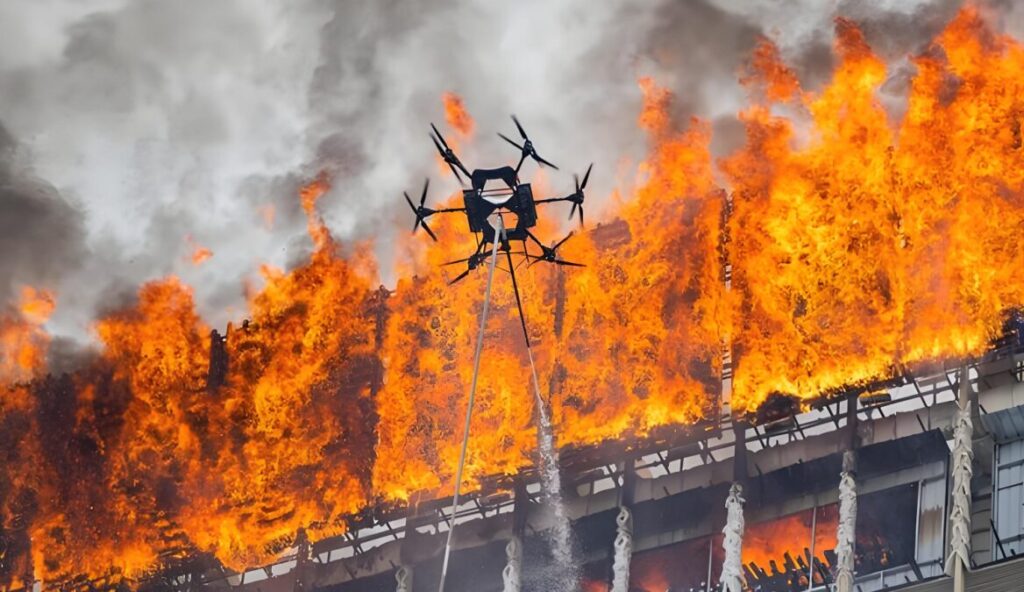In extreme environments such as raging wildfires, earthquake rubble, and landslide zones, traditional rescue methods often struggle due to complex terrain and human limitations. In recent years, firefighting drones have emerged as a cornerstone of modern disaster response systems, leveraging agility, versatility, and efficiency to redefine emergency operations. From fire suppression to search-and-rescue missions, these “sky responders” are pushing the boundaries of disaster management.
Core Technology: Overcoming Human and Environmental Barriers
Designed for diverse disaster scenarios, firefighting drones integrate three critical capabilities:
Modular Payload Systems: Rapidly interchangeable equipment—including water tanks, medical kits, and life-detection sensors—adapts to firefighting, search operations, and supply delivery.
Intelligent Navigation & Obstacle Avoidance: Combines LiDAR and AI algorithms to autonomously chart flight paths through smoke, storms, or rugged landscapes.
Extended Endurance & Stability: High-capacity batteries and wind-resistant designs enable 4-6 hours of continuous operation in harsh conditions.
Four Key Disaster Response Scenarios
- Wildfire Suppression
Drone swarms deliver fire retardants or water-based agents directly to flame cores, while thermal imaging monitors spread patterns—doubling efficiency compared to traditional helicopters.
- Post-Earthquake Search & Rescue
Equipped with infrared cameras and acoustic sensors, drones penetrate rubble to detect body heat or distress calls, while relaying temporary communication networks to survivors.
- Landslide Zone Support
Airdrop supplies to isolated areas and use 3D terrain mapping to assess slope stability, providing early warnings for secondary disasters.
- Urban High-Rise Fires
Bypass ladder height limits to deploy fire suppressants or escape ropes directly to skyscrapers, while guiding trapped individuals to safety.

Advantages Over Traditional Methods: Efficiency Meets Safety
Compared to manual firefighting teams or heavy machinery, drones offer transformative benefits:
- Speed: Deployment within 15 minutes, increasing utilization of the “golden rescue window” by 60%.
- Coverage: A single drone manages 5-8 km²; coordinated swarms scale to entire disaster zones.
- Zero-Risk Operations: Eliminate exposure to extreme heat, toxic fumes, or collapsing structures for human responders.
4. Cost Efficiency: Mission costs are 1/5th of helicopter operations, with reusable deployment.

Future Evolution: From Tools to Intelligent Networks
Next-generation drones will advance in two directions:
- Autonomous Decision-Making: AI prioritizes tasks based on real-time data—for example, identifying critical fire spread zones for targeted suppression.
- Integrated Systems: Collaborate with satellites, ground robots, and command centers to form a “detect-decide-act” loop, optimizing resource allocation.
Industry forecasts suggest: “By 2030, smart drones will handle over 40% of initial disaster response tasks.” This shift transcends technological progress—it represents a paradigm change from reactive crisis management to proactive prevention and rapid containment.
